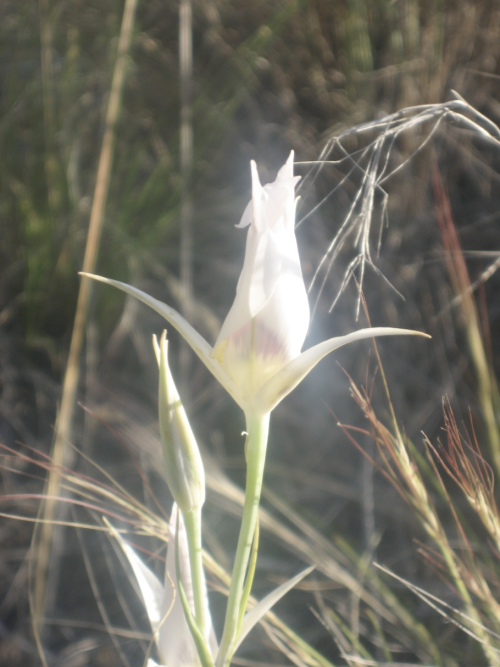
Figure 1. A calochortus lily.
One could easily find all the food they need on the Grande Ronde River. In addition to fish, which made up the Neze Perce summer diet, a variety of edible plants are abundant. All along our trip berries and fruits—both native and introduced—were just weeks away from being ripe. Domestic mulberries, apples, cherries, walnuts, and blackberries, and wheat were found at abandoned homesteads and other unexpected places. Native currants, raspberries, and thimbleberries were nearly omnipresent along the banks of the Grand Ronde.
Additionally, a variety of less conspicuous plant food source were scattered on the banks of the river. The calochortus lily pictured above would not conjure up the image of a meal for most, but for many Native American nations the cooked bulbs from these plants made up a considerable portion of their diet. Elderberries were juiced, eaten raw or dried for preservation. The fruit from western chokeberry, serviceberry, false Solomon’s seal, dogwood and prickly pear cactus was also eaten. Greens from miner’s lettuce, common mint, false Solomon’s seal and sedum were cooked, or used for seasoning. Rhizomes from spikerush, cattails, wild onions, and cow parsnip were also consumed.
